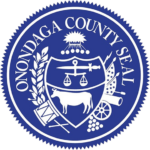The City of Syracuse, the Onondaga County Health Department and the New York State Department of Health are monitoring the public drinking water for the presence of toxins associated with harmful algal blooms (HABs). During the HAB season, samples are collected on a regular basis, then analyzed by an independent laboratory to determine if toxins are present.
Blue Green Algae
Drinking Water Quality: Blue-Green Algae
Some types of algae can produce toxins that can be harmful to people and animals. Algal blooms that produce toxins are known as Harmful Algal Blooms (HABs). Environmental conditions that contribute to the formation of HABs in bodies of water include excess nutrients (phosphorus and nitrogen), abundant sunlight, calm water conditions, and warmer temperatures.
Know It
Surface water that is discolored with a paint-like or filmy appearance or floating scum should always be avoided as they are potentially harmful. Images of these types of blooms as well as non-harmful blooms can be viewed here.
Weather influences where harmful algae blooms will occur. During extended periods of calm and sunny days, blooms can accumulate at the surface in any location. Wind and waves may cause them to form along shorelines or in protected areas. Shifts in wind direction can move a bloom from one location to another. Periods of cool rainy weather can often lead to the disappearance of a bloom.
Avoid It
Always stay away from blooms in surface waters. Never swim, fish, boat, wade or eat fish caught in areas with blooms. Bloom or no bloom, never drink, prepare food, cook, or make ice with untreated surface water. During a bloom, individual surface water supplies should not be used for showering, bathing, or washing dishes even if treatment is provided. Public water supplies that draw water from surface water are treated, disinfected and monitored. The public would be notified if public water supplies are impacted by algal blooms.
Report It
If you think that a bloom may be harmful and is present on Skaneateles Lake, the Onondaga County Health Department asks that you report it to the Skaneateles Lake Watershed Inspection Program at (315) 685-6486. If the bloom is present on another water body in Onondaga County, please report it to the New York State Department of Environmental Conservation (NYSDEC) at HABsinfo@dec.ny.gov.
Frequently Asked Questions
Blue-Green Algae
Further Resources
Learn more about Blue-Green algae and water quality on the following government websites.
